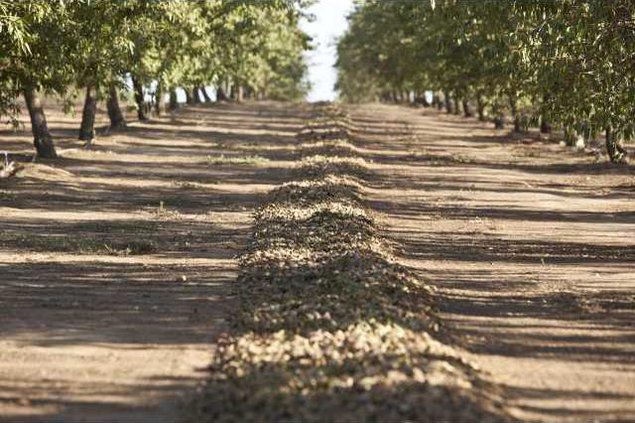It may not be possible to eliminate dust entirely during almond harvest season, but area farmers are still committed to improving air quality by using some new innovations that don’t sacrifice production efficiency.
“There’s a number of reasons to revisit how we harvest almonds, which includes everything from how we’re trying to reduce dust,” said Almond Board of California Director of Sustainability and Environmental Affairs Gabriele Ludwig. “The larger question is how we can reduce dust as the industry has grown. There are more people now being exposed to almond harvesting just because there are more acres of almonds out there.”
The almond harvest is a three step process that begins with a shaker machine that shakes the almonds from the tree onto the ground where they dry for several days. Almonds are then swept into rows with a sweeper machine and picked up off the ground and transported to a processing facility.
Each almond orchard typically contains two to three different almond varieties to aid in honey bee cross pollination and each variety is harvested separately, so this three step process occurs two to three times in many orchards.
The Almond Board said that harvesting almonds naturally creates dust, but there are many steps the almond community is taking to help improve air quality in any way.
“We are always thinking of what we can do to minimize something that is going to be dusty no matter what,” said Ludwig. “With our current harvesting system, we encourage growers to invest in technology to reduce dust and in the long term we would like to completely revisit how we harvest almonds.”
To aid almond growers in the industry’s endeavor to help improve air quality, newer almond harvest equipment is specifically designed to reduce dust, and existing harvest equipment can be adjusted to reduce dust by matching conditions, reducing speed or strategically planning the path equipment takes through the orchard.
“Growers are going to make choices based on cost and what system works better for their particular situation,” said Ludwig, “but we would like to see more growers invest in equipment that has been engineered to reduce the amount of dust emitted from the pickup process.”





